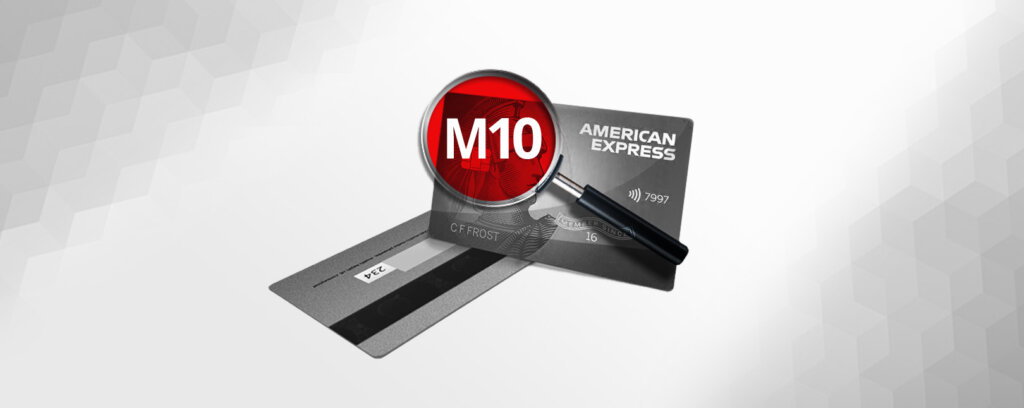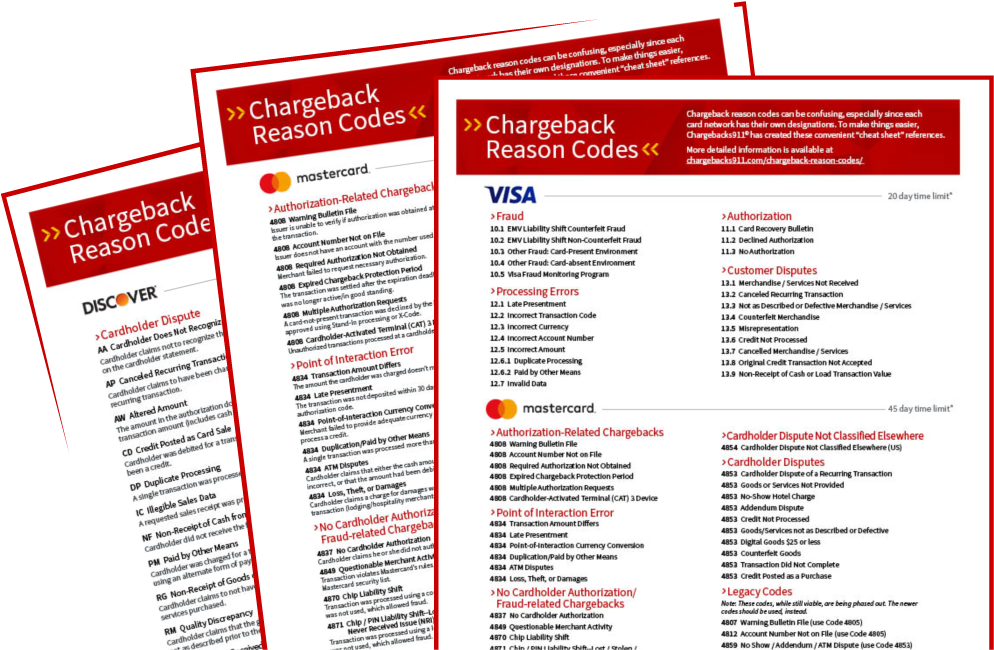
How to Handle Amex Reason Code M10 Chargebacks
American Express breaks down the acceptable causes for a customer to dispute a credit card transaction in their dispute guidelines. This is done for the sake of simplicity and standardization.
Each chargeback trigger has a designated “reason code.” Amex can then assign the appropriate code to each case to show the given reason for the chargeback.
Learn more about Amex reason codes
Today, we’re looking at one reason code in particular — M10 — and exploring the causes, timeframes, fees, and other specifics. We’ll also explore what you can do to prevent these chargebacks from happening.
Recommended reading
- Mastercard Chargeback Time Limits: The 2025 Guide
- Chargeback Stats: All the Key Dispute Data Points for 2025
- What Happens When You Dispute a Transaction?
- Point of Sale Systems: How to Get More From Your POS Machine
- Chargebacks911® Gets in the Game for the Special Olympics!
- Chargebacks911® Food Drive in Support of The Kind Mouse!
What is American Express Reason Code M10?
American Express chargeback reason code M10 is “Vehicle Rental - Capital Damages.” This reason code is used to explain that the cardholder made a reservation for a vehicle rental. One of the following issues then arose:
- Capital Damage: The cardholder was billed for damage that allegedly occurred while the vehicle was in the cardholder’s possession.
- Theft: The vehicle was stolen while in the cardholder’s possession.
- Loss of Use: The vehicle was incapacitated and inoperable.
The cardholder was then charged billed in response to one of the conditions outlined above. However, the cardholder argues that the issue was not their fault, and that they should not be charged as a result.
What Caused This Dispute?
Amex Chargeback Reason Code M10 is primarily issued when a vehicle rental goes wrong. To demonstrate, this scenario can arise if:

How to Respond to Amex Reason Code M10 Chargebacks
So, what happens if you can prove that the cardholder was rightly charged for damage, theft, or loss of use of the vehicle in question?
Naturally, if you receive an Amex M10 chargeback, you’ll want to resolve the issue right away. If you feel that the chargeback was filed in error, you should file a dispute response. This is done through a process called representment.
Representment is the process through which you’ll challenge a chargeback. You provide evidence to the card issuer (in this case, American Express) that all aspects of the transaction were legitimate and in accordance with the card issuer's policies. This can involve several key pieces of evidence.
Also, remember that there’s a strict time limit to consider. You have just 20 days in which to submit your response to American Express. However, this time frame also includes the time it took for your acquirer to provide you with a dispute notification, as well as time spent by the acquirer reviewing and submitting your case. In practical terms, you’ll often have five days or less in which to prepare and submit your response.
Acceptable Evidence for Amex Reason Code M10 Responses
You can re-represent these charges under the condition that you have compelling evidence.
For American Express reason code M10 chargebacks, you’ll need to provide proof that the cardholder agreed to — and signed an acknowledgement of — responsibility for capital damages. You must also show that the charge in question did not exceed 110% of the amount agreed upon. Examples of acceptable documents include:
- Documentation outlining customer liability for damage or theft, signed by the cardholder.
- A copy of the terms and conditions that were presented to the customer at the time of booking.
- Documentation showing that the cardholder took possession of the vehicle according to the reservation.
- Photographic evidence of the alleged capital damage that precipitated the charge.
Alternatively, you might have already issued a credit to the buyer as a way of trying to avoid the dispute. In this case, you’ll need to offer proof that you already provided a credit to offset the amount charged.
The success of representment depends on the thoroughness and relevance of the evidence provided. Maintaining detailed records of transactions and communications with customers is vital to effectively counteract all chargebacks, including those under reason code M10.
How to Prevent Amex Reason Code M10 Chargebacks
As the old adage goes, “an ounce of prevention is worth a pound of cure.”
You may never be able to stop chargebacks entirely. But, you can limit your exposure to risk and keep your chargeback ratio in good standing by adopting a few best practices. Generally speaking, you’ll want to:
#1 | Get it in Writing
Obtain formal acknowledgment from the cardholder of responsibility for damage or theft of a vehicle before submitting any charges.
#2 | Take Pictures
Take pictures of the vehicle before the customer takes possession of it, documenting any preexisting damage or cosmetic defects.
#3 | Get Consent
Obtain formal, signed consent from the cardholder, showing that they agree to be charged for an amount equivalent to the cost of any loss, damage, or theft they cause.
Take a Wider View
You can dispute invalid chargebacks from Amex reason code M10. However, it’s much more efficient to take a proactive stance. The same is true of the other chargeback reason codes, as well. A truly effective chargeback management strategy must encompass prevention as well as disputing cases of friendly fraud.
Chargebacks911® can help your business manage all aspects of chargeback reason codes, with proprietary technologies and experience-based expertise. Contact us today for a free ROI analysis to learn how much more you could save.
FAQs
Does Amex investigate chargebacks?
Yes. American Express investigates chargebacks by reviewing the evidence provided by both the merchant and the cardholder to determine the legitimacy of the transaction and decide on the chargeback claim. This process ensures a fair resolution based on the documentation and arguments presented by both parties.
What is the reason code for a chargeback on American Express card?
An American Express chargeback reason code is a code that identifies the specific reason a cardholder or issuing bank has disputed a transaction, guiding the merchant on the nature of the dispute and what evidence may be required to contest it. Each code corresponds to a particular issue, such as unauthorized use, processing errors, or non-receipt of goods or services. Click here to see a full list of Amex reason codes.
Do police investigate chargebacks?
Police typically do not investigate chargebacks as they are considered a dispute between the merchant and the cardholder, handled through the card issuer's internal processes. However, if fraud is suspected as the cause of a chargeback, law enforcement may be involved in investigating the fraudulent activities.
How successful are Amex disputes?
The success of an American Express dispute depends on the merchant's ability to provide compelling evidence that the transaction was valid and in accordance with Amex policies. Success rates vary widely based on the nature of the dispute and the quality of the documentation provided by the merchant.
How does American Express investigate disputes?
American Express investigates disputes by reviewing documentation and evidence provided by both the cardholder and the merchant, such as transaction receipts, proof of delivery, or communication records, to determine the validity of the chargeback claim. This process aims to ensure a fair resolution based on the facts presented by both parties.









